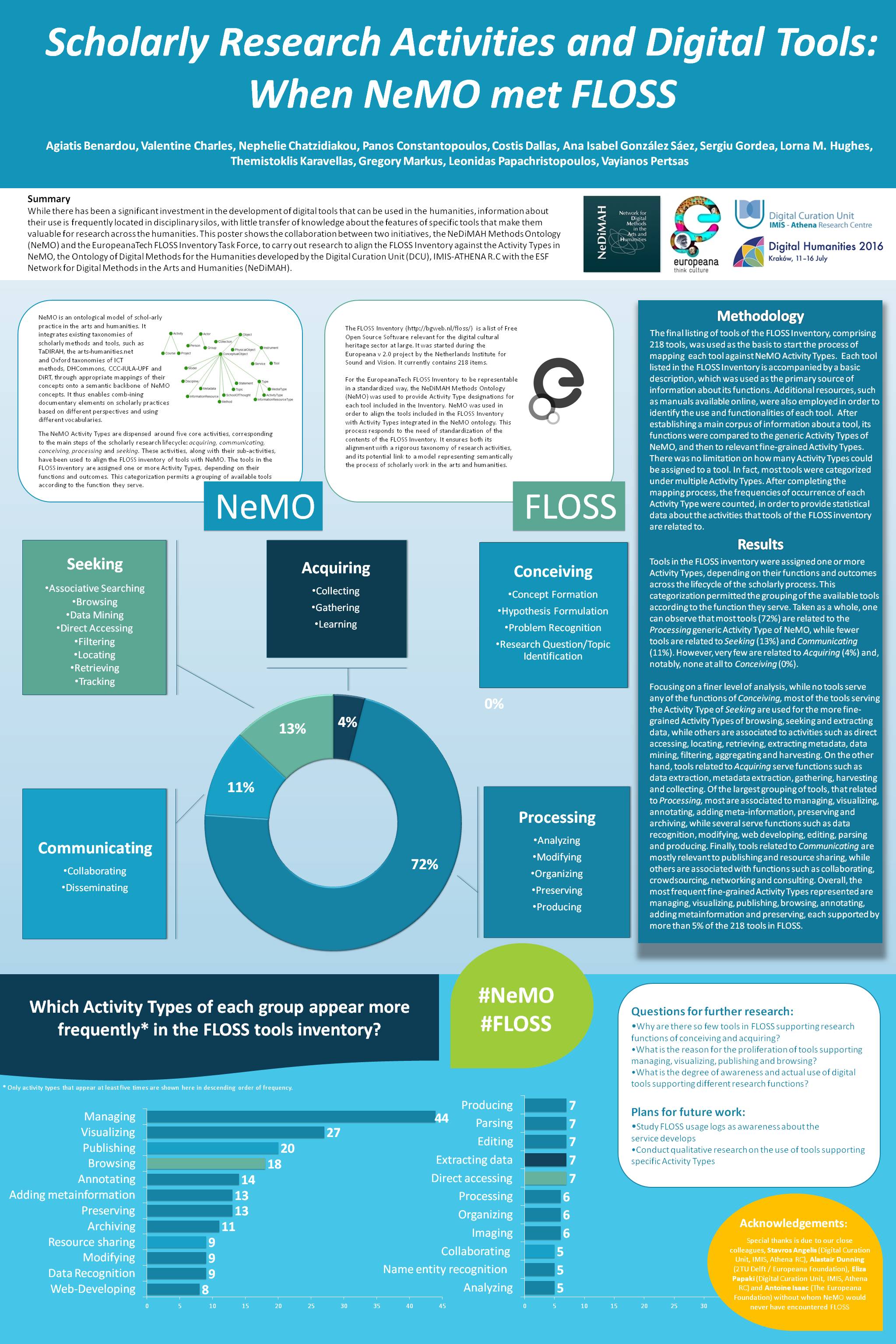DH2016: NeMO and FLOSS traveling to Krakow
This article is by Nephelie Chatzidiakou, Scientific Associate at the Digital Curation Unit, Athena R.C.
The collaboration between two EU initiatives, the NeDiMAH Methods Ontology (NeMO) and the Europeana FLOSS Task Force Inventory, aiming to align the FLOSS Inventory tools against the Activity Types in NeMO, traveled to Krakow, at the Digital Humanities 2016 Conference. The poster presented in the conference showcased the results of the cooperation between the NeMO and FLOSS research groups and focused on the visualization of the results of this work regarding which functions the digital tools in the FLOSS Inventory serve.

The FLOSS Inventory consists of over 200 well-documented, active and pertinent Open Source tools and is actively updated and maintained. The NeDiMAH Methods Ontology (NeMO) on the other hand, the primary output of the ESF Network for Digital Methods in the Arts and Humanities (NeDiMAH), is a formal ontology representing and codifying the scholarly work in the Humanities through controlled vocabularies of interrelated concepts. NeMO incorporates a tagging system through a taxonomy of Activity Types, which is structured in five hierarchies corresponding roughly to scholarly primitives (Unsworth 2000), incorporating also existing taxonomies and related work such as TaDiRAH, Oxford ICT and DH Commons.
The research teams working on FLOSS and NeMO collaborated to map each tool in the EuropeanaTech FLOSS Inventory against the NeMO Activity Types. The structure established by NeMO divides scholarly research practices into five Activity Types within a scholarly research lifecycle. Those are: seeking, acquiring, conceiving, processing and communicating and they encompass narrower terms accounting for further detail and specialization. Overall, most tools (72%) are related to the Activity Type of Processing, while fewer tools are related to Seeking (13%) and Communicating (11%). However, very few are related to Acquiring (4%) and, remarkably, no tool is related to to Conceiving (0%). More particularly, most of the tools serving the Activity Type of Seeking are used for browsing, seeking and extracting data, while others are associated to activities such as direct accessing, locating, retrieving, extracting metadata, data mining, filtering, aggregating and harvesting. On the other hand, tools related to Acquiring serve functions such as data extraction, metadata extraction, gathering, harvesting and collecting. Of the largest grouping of tools, those related to Processing, most of them are associated to managing, visualizing, annotating, adding meta-information, preserving and archiving, while several serve functions such as data recognition, modifying, web developing, editing, parsing and producing. Finally, tools related to Communicating are mostly relevant to publishing and resource sharing, while others are associated with functions such as collaborating, crowdsourcing, networking and consulting. The most frequent fine-grained Activity Types represented are managing, visualizing, publishing, browsing, annotating, adding metainformation and preserving, each supported by more than 5% of the 218 tools in FLOSS.
This endeavor enabled the categorisation of available tools according to the function they serve and can be of use to researchers in the Humanities for consulting an authoritative list of tools according to the type of activity they wish to undertake. Furthermore, representing the FLOSS Inventory using NeMO adds value to digital research, and the visualization of the uses of available digital tools can facilitate an important debate about software development trends.

